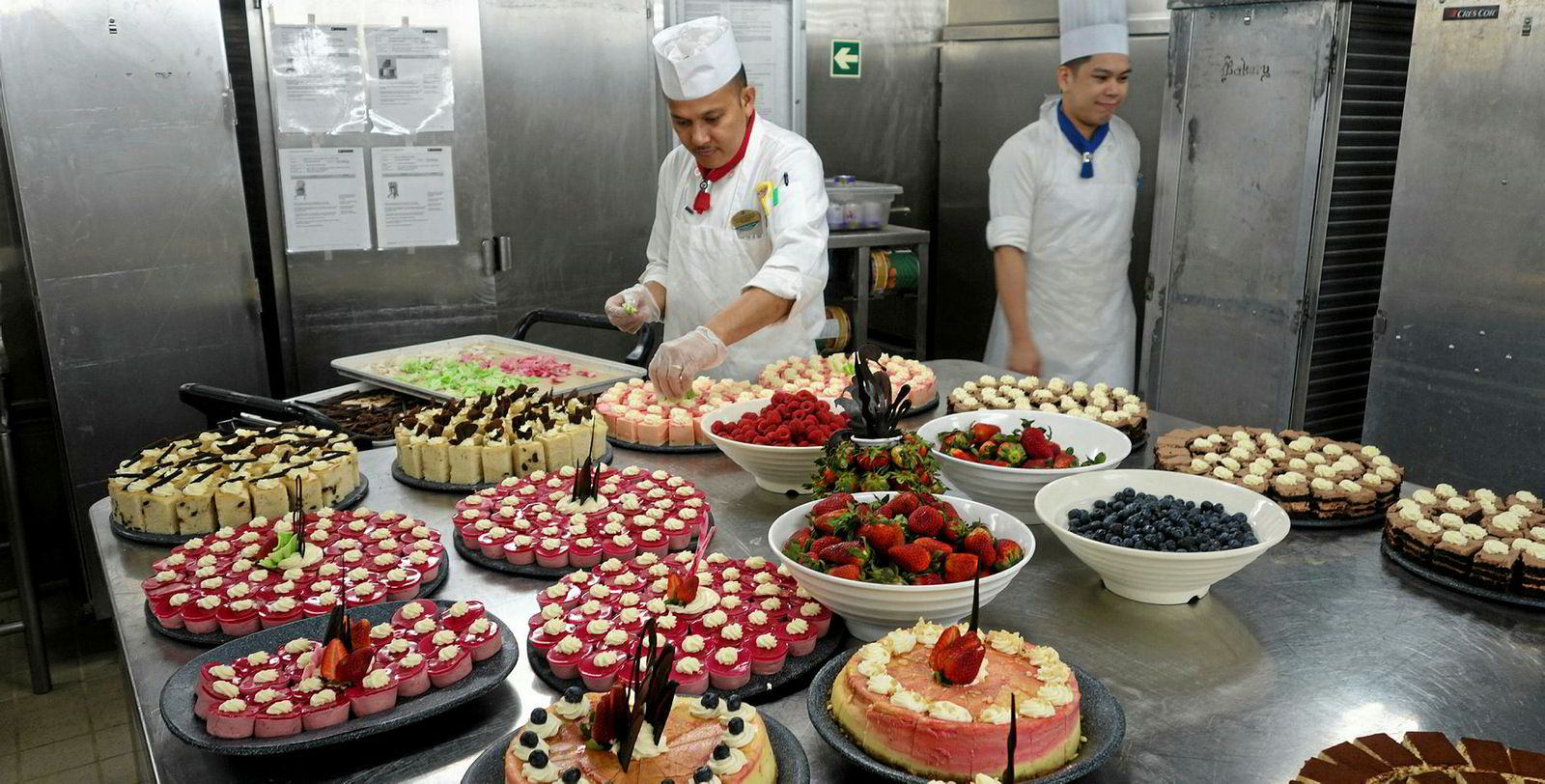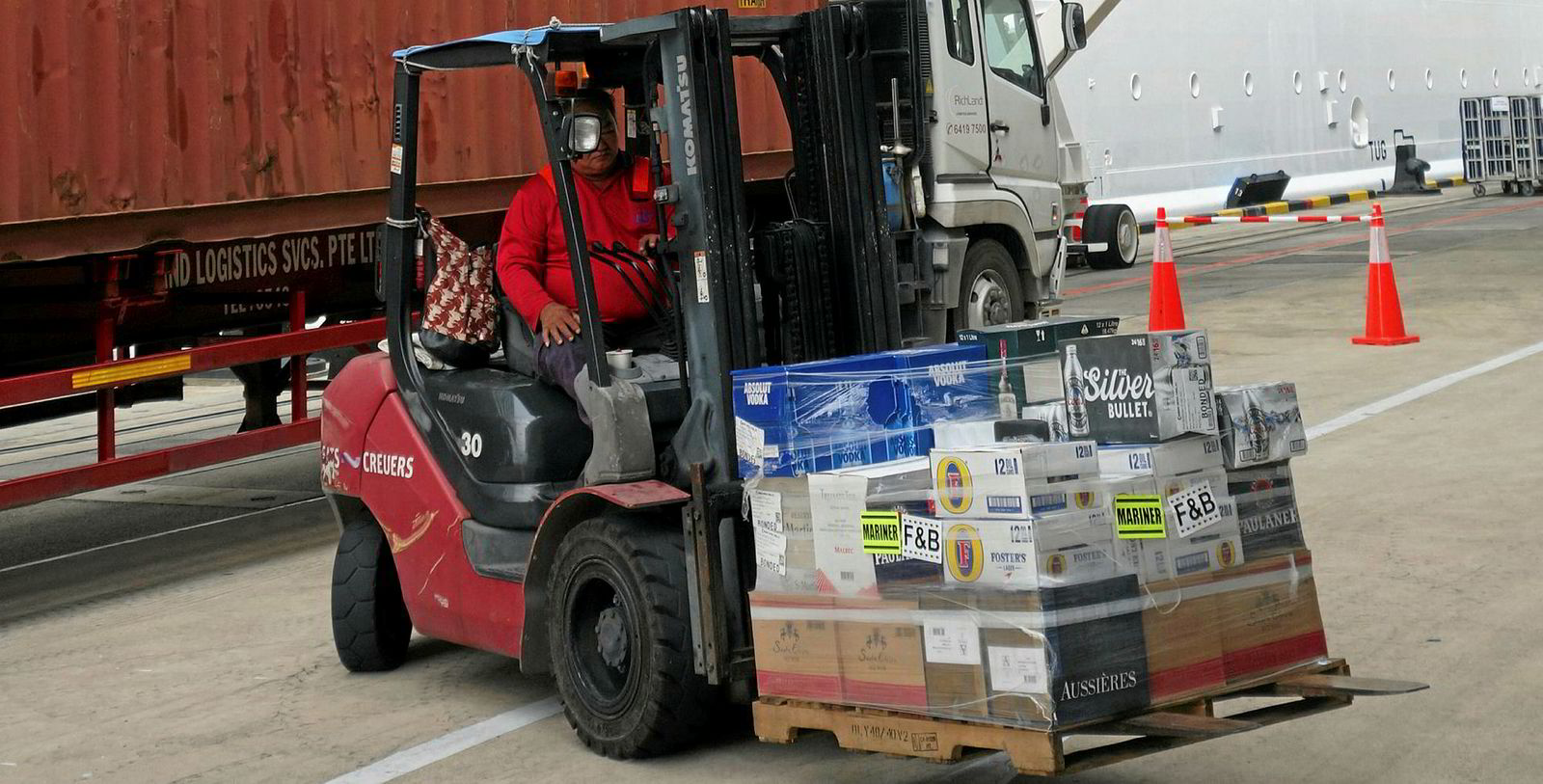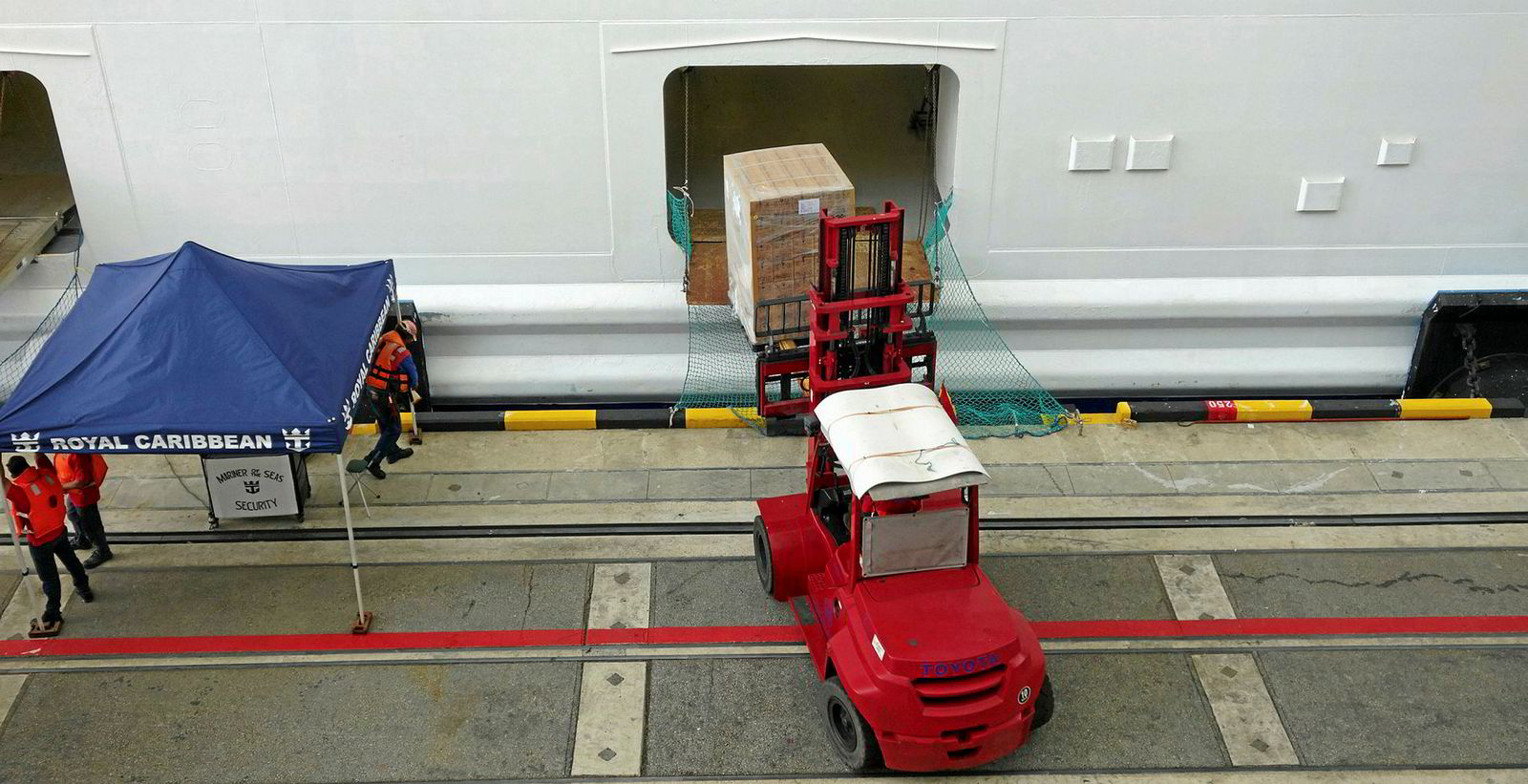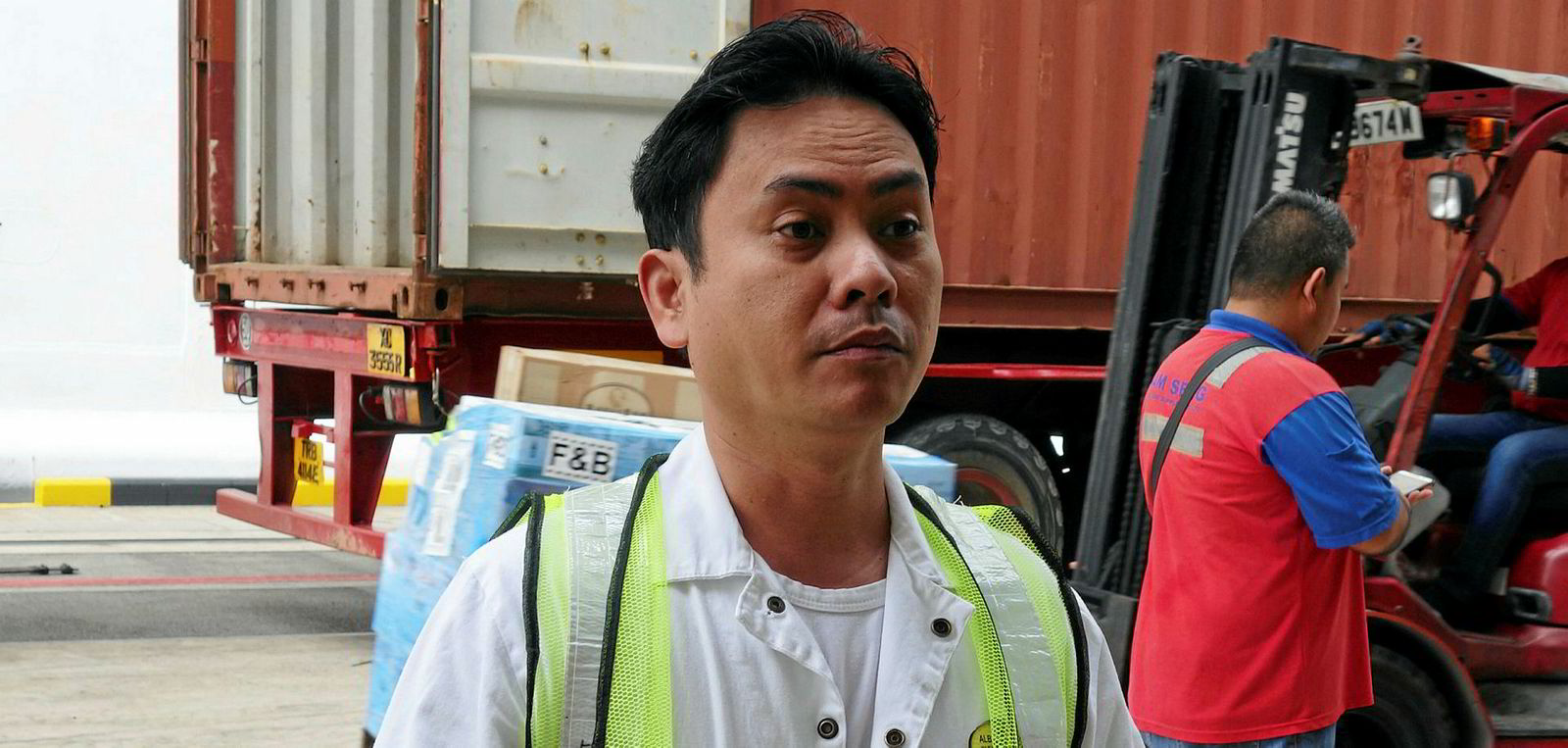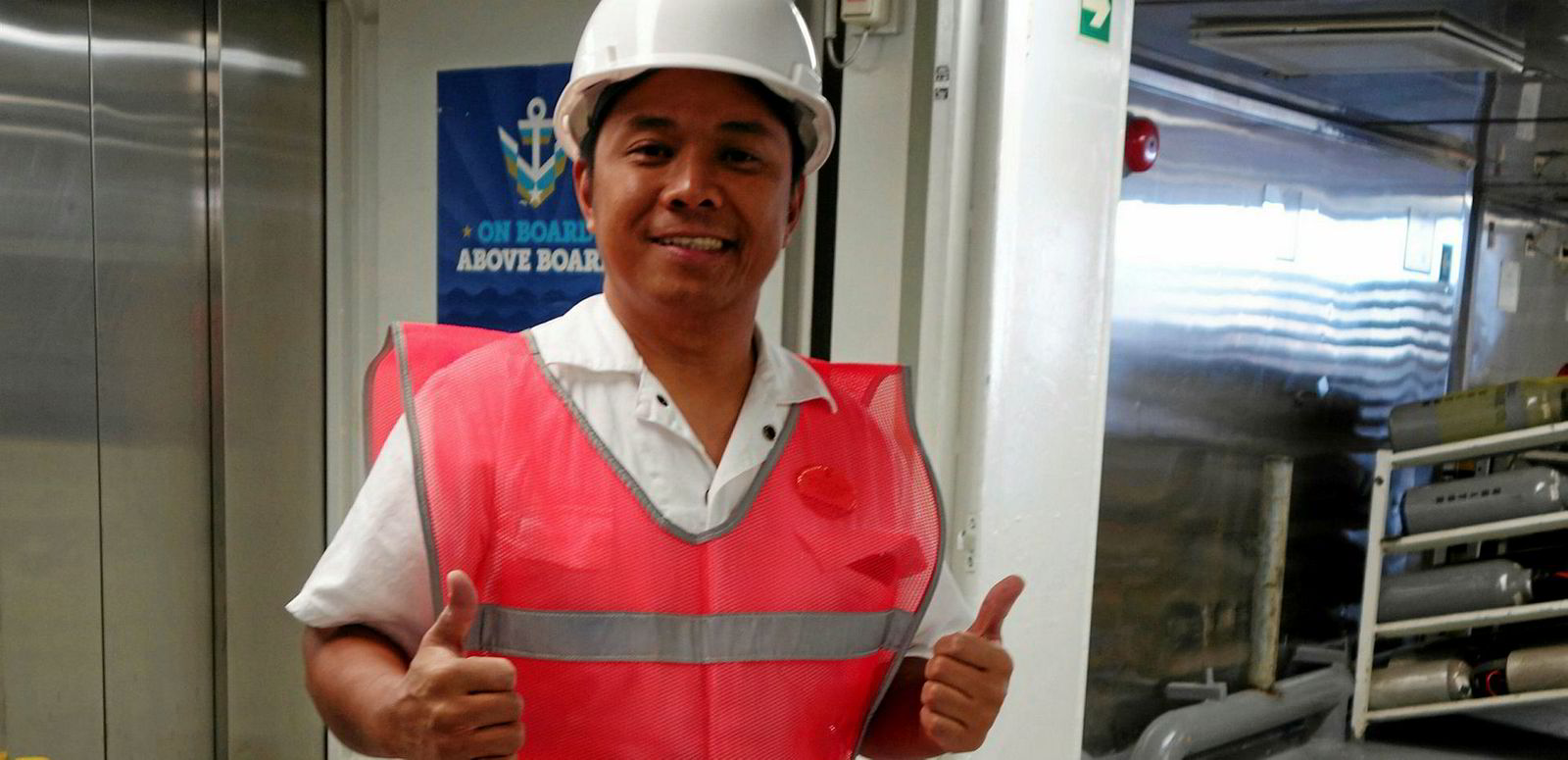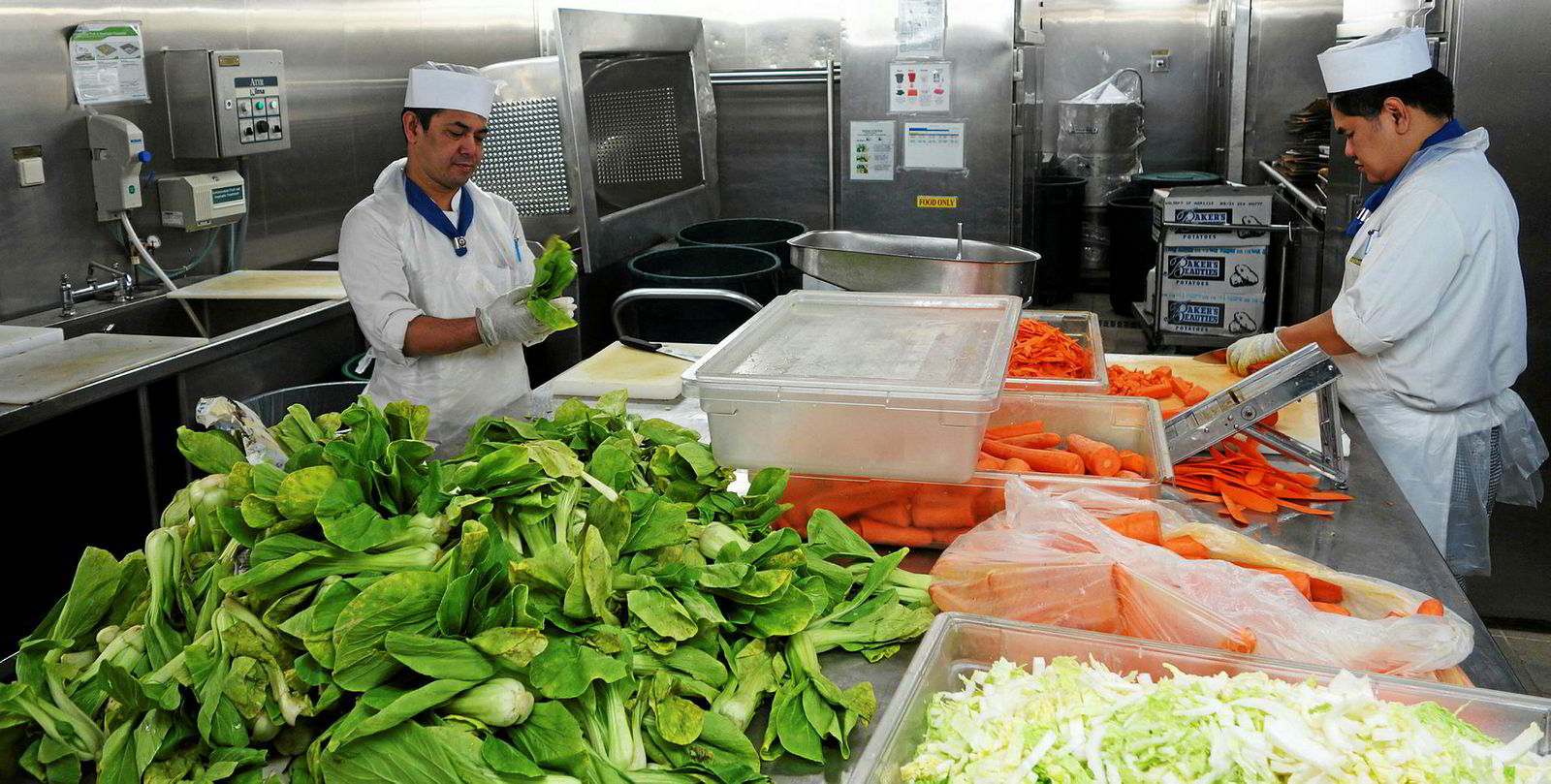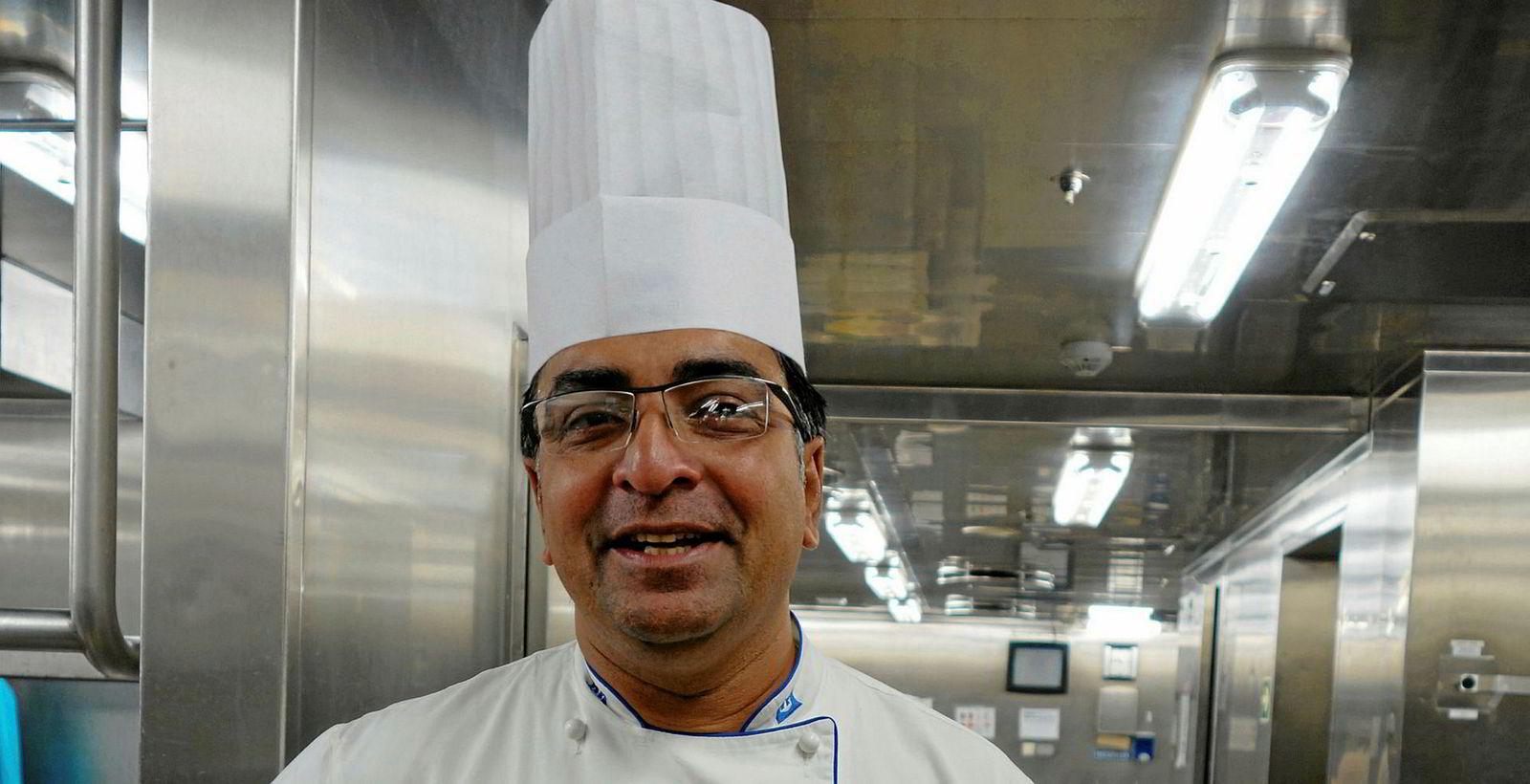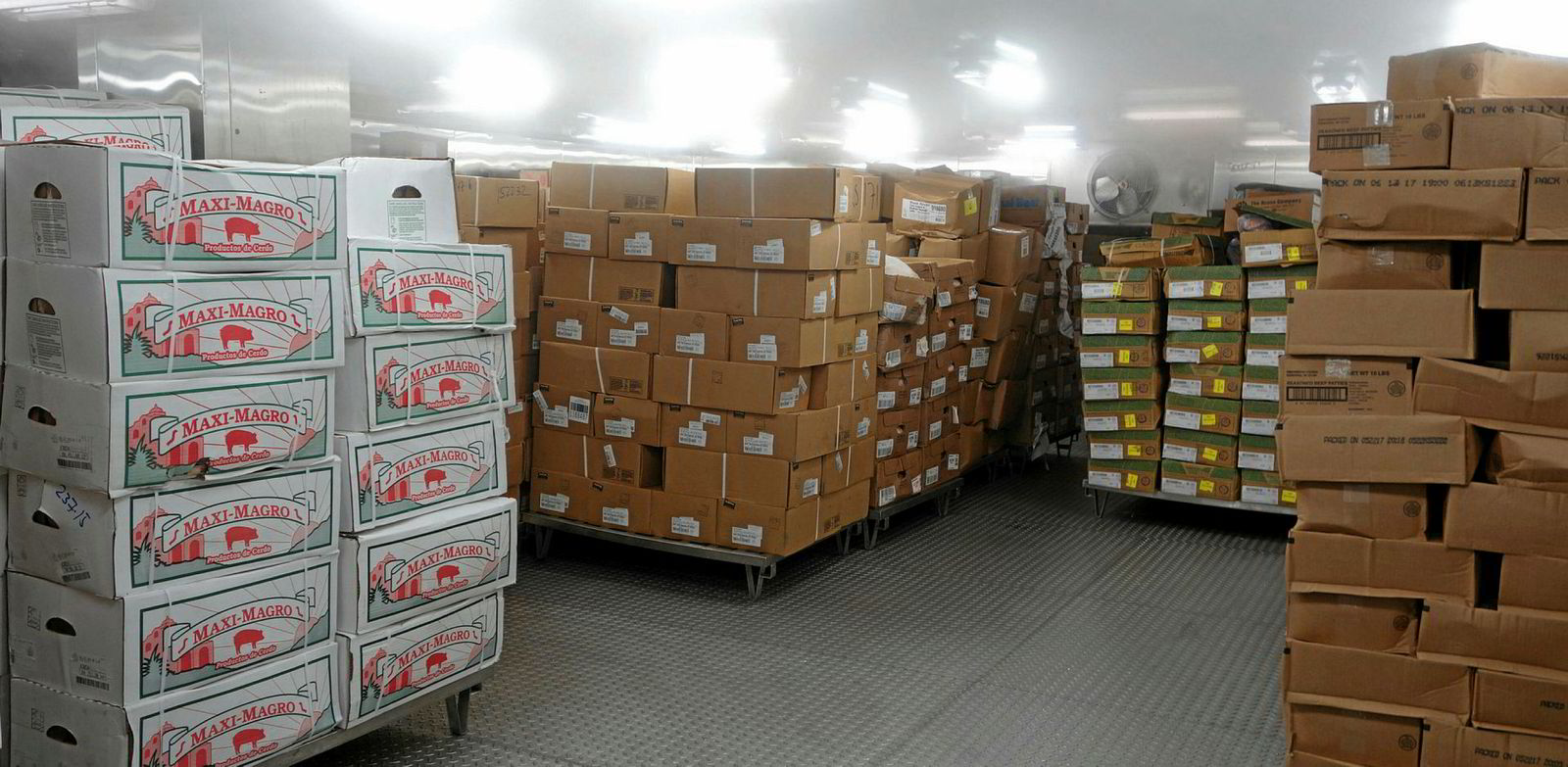It is nearly nine o’clock on a Monday morning in Singapore and the 138,300-gt Mariner of the Seas has just docked alongside the Marina Bay Cruise Centre at the end of another Southeast Asian cruise.
As disembarking passengers stream into the terminal building via telescopic gangways, a busy scene begins to play out down on the dock as the Royal Caribbean Cruise Lines ship begins to take on supplies for its next cruise.
A fleet of forklift trucks is unloading 40ft containers and delivering pallets of supplies to large doors low down in the hull. Hotel supplies are being loaded forward, food and beverages aft.
It is at the aft loading station that TW+ meets Alberto Taypa, inventory manager for the Mariner of the Seas. He has a busy day ahead of him loading all that is needed to keep this floating city of 3,900 passengers and 1,100 crew functioning over the next week. When loading is complete, it will have taken on enough food and supplies to fill 12 to 14 40ft containers.
Taypa describes the loading he is supervising as a carefully choreographed dance. Everything is first subject to random security inspections, and the food to quality control checks. Only then can it be loaded onboard.
A strict sequence needs to be followed when loading food. Fresh produce has a short shelf life if left standing in the tropical heat, so it is at the head of the queue, followed by frozen meat, then dry stores.
It takes careful preparation, and any late delivery will throw a spanner in the works of Taypa’s delicate dance. “We have to follow this sequence to avoid cross-contamination,” he explains.
Provisions master Salvador Casipit is at the receiving end of the flow of goods Taypa is sending onboard. He supervises a team that loads the galley stores into vast storage rooms, refrigeration chambers and freezers. Even here a precise order needs to be maintained so that everything is readily accessible and the first items loaded are the first to be used.
Even simple fruits such as bananas require special handling. Bananas spoil quickly, so ripe fruit is required for the first days of the cruise, and progressively greener bananas are stored with a consumption date to match when they will be ready to eat.
Casipit enjoys showing off the liquids store, where he expects to load 30,000 cans of beer and 6,000 bottles of wine among a large number of other beverages, including 12,000 bottles of water. Alcohol consumption is much lower in Asian than US and European cruise markets, where a far higher volume of beer and wine needs to be loaded every week.
While the loading of supplies continues at a hectic pace, the galley team is busy preparing for the passengers on the next cruise, who will begin boarding the ship later in the morning and expecting to be served lunch.
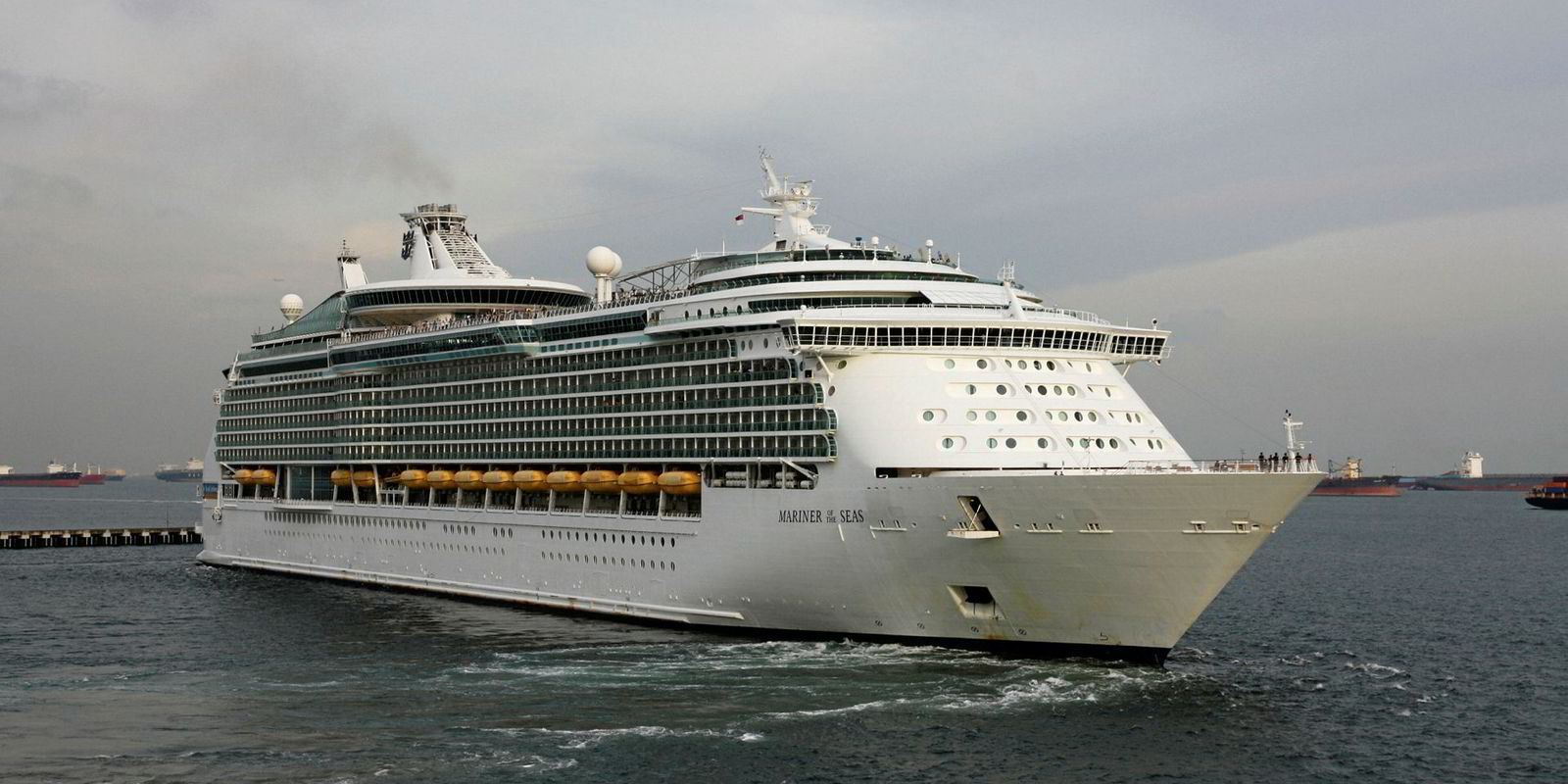
Cooks are washing and preparing vegetables and meat, while the bakery team is working flat-out to prepare bread rolls and elaborate cakes and pastries.
Overseeing them is executive chef Anil George, a 26-year veteran with Royal Caribbean. His realm is a main galley spanning three decks that supplies the commodious dining room, and eight other satellite galleys serving the speciality food venues scattered around the ship. He rules over a team of 12 senior chefs and 180 cooks, bakers and galley helpers who pump out in excess of 16,000 meals in a 24-hour period.
The secret of mass catering on large cruise ships, according to George, is standardised menus and systems, together with assembly-line processes. They are key to maintaining uniformity and quality across Royal Caribbean’s fleet of 24 ships, many of which are even larger than the Mariner of the Seas.
Fleet-wide menus are created at head office, with about 40% of the items adapted to the local tastes of the different global markets where the cruiseships operate. Chinese and Indian foodstuffs feature prominently on Royal Caribbean’s vessels operating in Asia.
Supplying 24 ships spread across the globe requires a sophisticated supply chain network to ensure they all receive supplies in a just-in-time manner.
All meat and poultry is sent from Royal Caribbean’s main logistics base in Miami. Shipped in refrigerated containers, it requires a lead time of 90 days. Supplies that are sourced locally need shorter lead times, sometimes as little as 14 days, but that means having reliable local suppliers that are capable of delivering on time, every time.
Although orders have to be placed up to three months in advance, it is easy for George to judge exactly how much of each ingredient will be required, based on data about the various nationalities on board.
Computerised waiter ordering systems onboard track what is ordered by passengers, and in what quantities. Sophisticated data-analysis systems can predict with a high degree of accuracy how many people will order the Spaghetti Arrabiata or the Moroccan Spiced Barramundi on a given Tuesday three months from now.
Following the Mariner of the Seas’ food supply chain from dockside to dining table might seem complicated, perhaps even chaotic, but for Taypa, Casipit, George and the others who ensure that it runs with clockwork efficiency, it is merely a well-practised routine.
By mid-afternoon the loading is complete and the boarding of passengers is in the final stages. The ship will sail in the early evening as passengers take their seats in the dining rooms. Few of them will know or even think about the complex processes that led up to their meal appearing before them.
